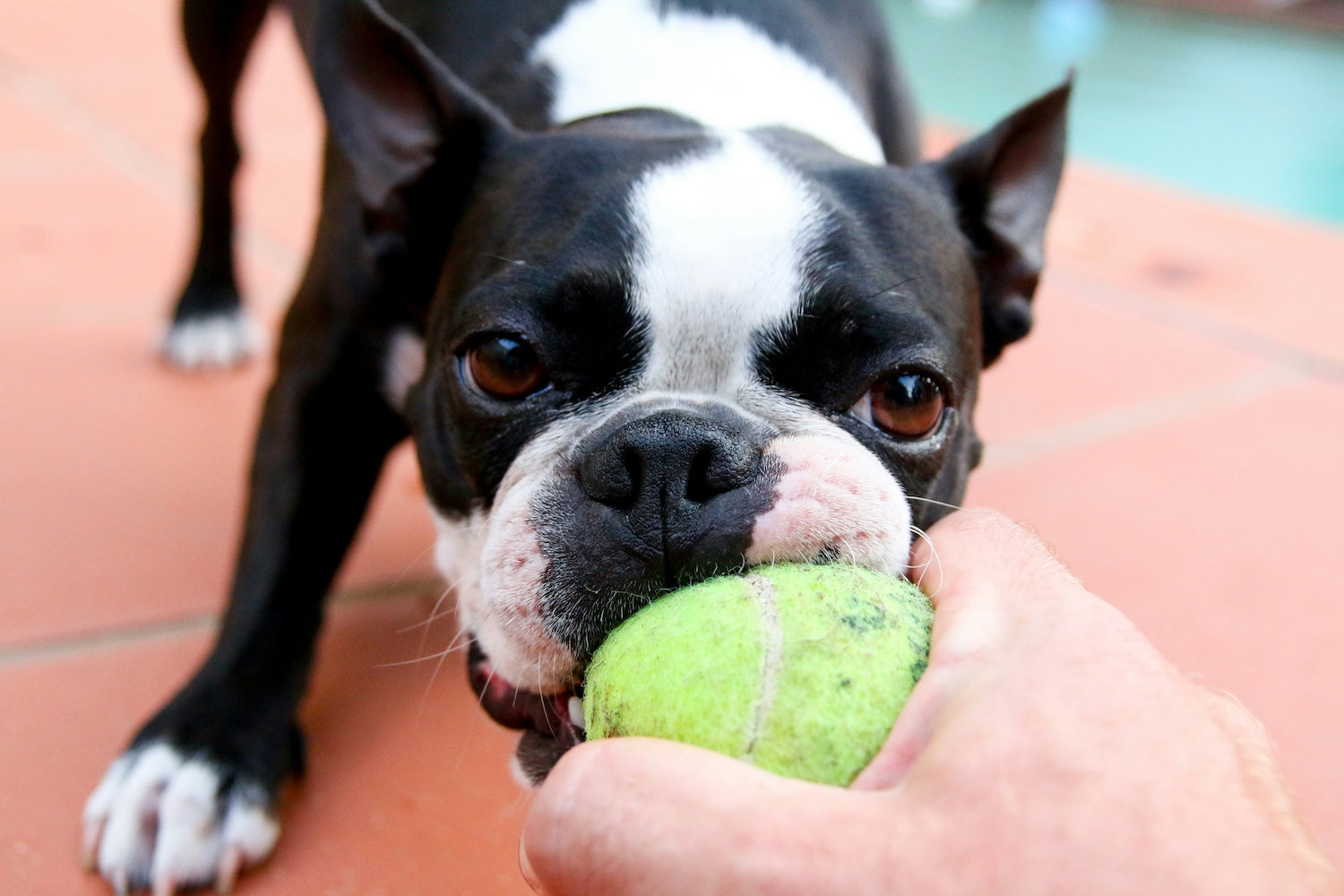Maintaining your dog’s mental health is all about identifying signs of distress and knowing what dogs like in terms of feeling happy.
In theory, there’s not much to do. Dogs love being around people and they love attention. However, as you dig deeper, you’ll realize there are certain things that can support your dog’s health and wellness in a more effective manner. Here’s what you need to know.
Signs of Mental Distress
Generally speaking, you shouldn’t wait until you see these signs to support your dog mentally. However, it’s important to know them in order to recognize the fact that you might be doing something wrong.
- Blinking often and turning the head away when you look at your dog.
- Crouching in certain circumstances while hiding the tail between legs.
- Licking lips excessively and yawning all the time.
- Panting isn’t all about being hot, as some dogs also pant when they’re under mental stress.
- Trembling, salivating or shaking.
- Hiding all the time, even if they’re normally sociable.
These signs can clearly indicate a problem, so there must be something you’re doing wrong or perhaps a factor that can stress the dog out.
These being said, let’s see what you can do to keep your dog happy and healthy.
The Right Amount of Exercise
Dogs require walks and other forms of exercise, but it all depends on the breed, age and physical condition. For example, high energy breeds like Labradors may need at least 2 hours of daily activity compared to bulldogs.
What works for some dogs won’t work for every dog out there. You’ll need to do a bit of research if you’ve just gotten the dog.
You’ll also have to mix different types of exercise. Walks are ideal, but you also need to play fetch at times, not to mention occasional activities like swimming or hiking. Again, make sure you do all these with your dog’s physical condition in mind.
Train the Dog
It sounds hard to believe, but many dogs feel frustrated when their owners are frustrated. Communication isn't there. The owner is annoyed about something and the dog has no idea what it is. This lack of communication is harmful to both parties and can seriously affect the dog's mental health.
Daily dog training depends on the breed and the dog’s character. Once communication is established through consistent verbal cues, hand signals, and immediate positive reinforcement, and the dog can easily understand what you want, chances are all those frustrating episodes will become history in no time.
Mental Stimulation Is a Must
There are more things you can do to mentally stimulate your dog. Besides, such exercises add to your dog’s health and wellness as well. The idea here is to keep the dog’s brain active. Plus, any activity spent with you should be a fun activity, so games will never hurt.
Puzzle toys specifically made for dogs are extremely useful here. Training sessions will also include such toys, so you can figure out what kind of activities your furry friend prefers. Moreover, there are all sorts of interactive games you can try.
For example, hide and seek is a good game to experience with your dog. Brings back some good memories from your childhood too, right?
Focus on Socialization
Socializing your dog isn’t necessarily all about you two. Sure, the dog can and will socialize with people in the house in a natural manner, especially if you’re ready to give lots of attention. But at the same time, dogs also need to socialize with other dogs.
If you have friends with friendly dogs of a similar age and size, it might be a good idea to set up some playdates every now and then. Besides, you can also hang around dog parks and let your dog experience socialization with unknown dogs. Avoid peak hours, as quieter times allow timid dogs to acclimate without pressure.
All these things will add to your furry friend’s social skills.
Always Have Some Rewards
You should always have some rewards on you for good moments. It may sound like a training technique and you’re right, it is, but it also contributes to your dog’s wellness and health, especially mental health.
Rewards are all about showcasing good behavior. Whenever your dog does something good (such as good behavior, no barking at the mailman, socializing with other dogs and so on), make sure you hand over a reward. Timing is critical as well. You should deliver the treat within 2-3 seconds of the desired action to create a clear association.
With time, your dog will realize that good behavior earns them rewards, so they’ll keep doing good things to get those treats. Praising your dog while handing a treat is just as important.
No Overstimulation
Got a husky who loves arguing with you? How about a small terrier who’s always full of energy? When it comes to energy, chances are you’re not walking or training your dog enough.
Now, there’s a fine line between draining your dog’s energy and overstimulating your dog. When overstimulated, stress inevitably kicks in. Too much excitement isn’t necessarily something good.
Limit the exposure to chaos, crowded areas and other similar settings, as well as loud noises. Dogs need time to relax, so make sure you give yours plenty of it.
Quality Time, Not Just Time
When you walk your dog or go for a hike, you need it to be quality time for both of you. It’s a matter of the dog’s health and wellness.
This isn’t just about you, but also about your dog. This means you’ll also have to let your dog explore at its own pace, even if it feels like your furry friend may take too much time sniffing a certain area. Let your dog have fun and feel good as well. End each outing with a calming ritual, like a gentle massage or a hydration break, to transition from adventure mode to relaxation.
Daisy Becker is a passionate animal lover and yoga enthusiast. She actively incorporates her affection for pets into her lifestyle, often sharing moments with her beloved animals. In addition to her love for animals, Daisy is dedicated to her yoga practice, finding balance and mindfulness through regular sessions.






